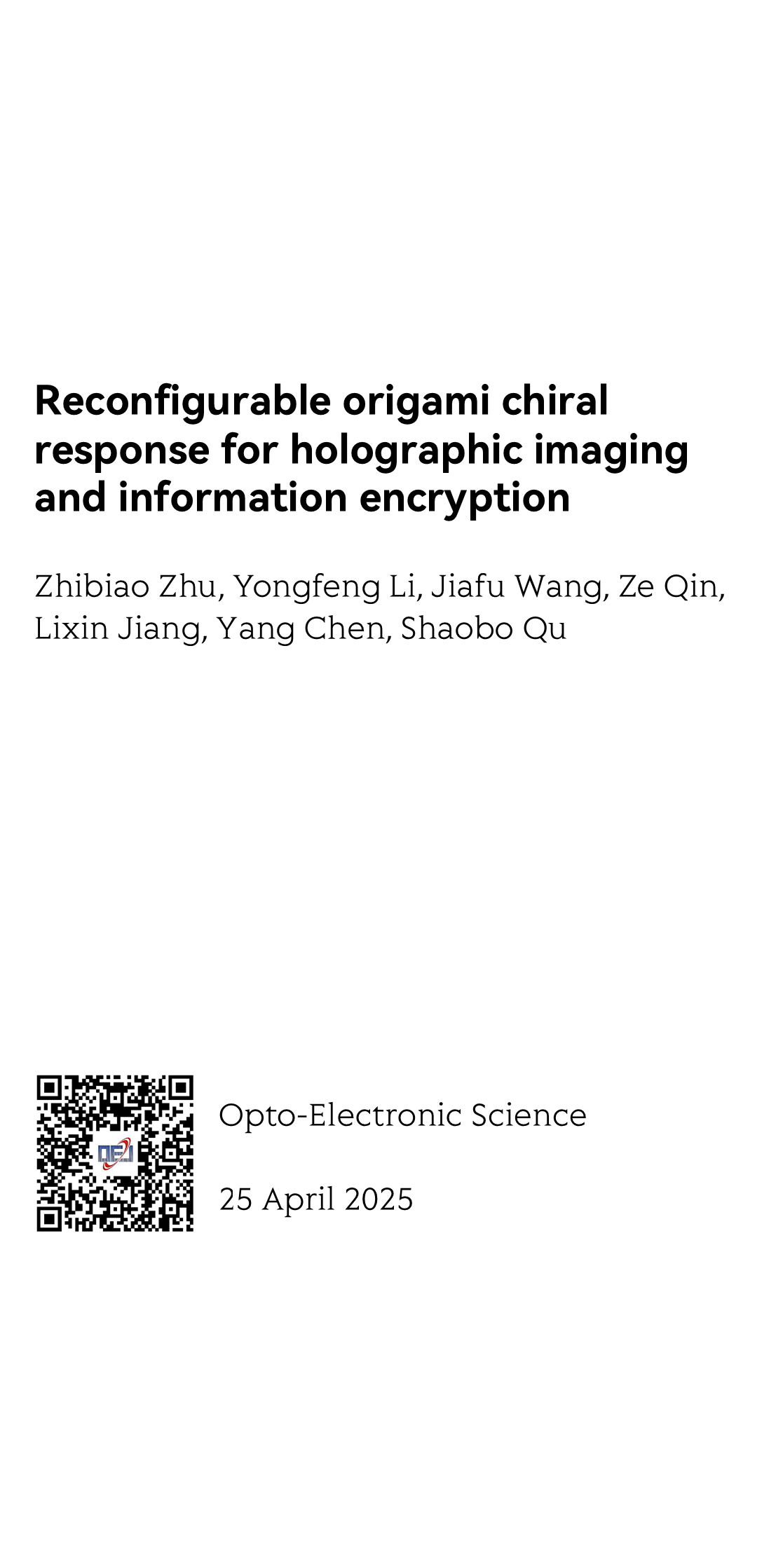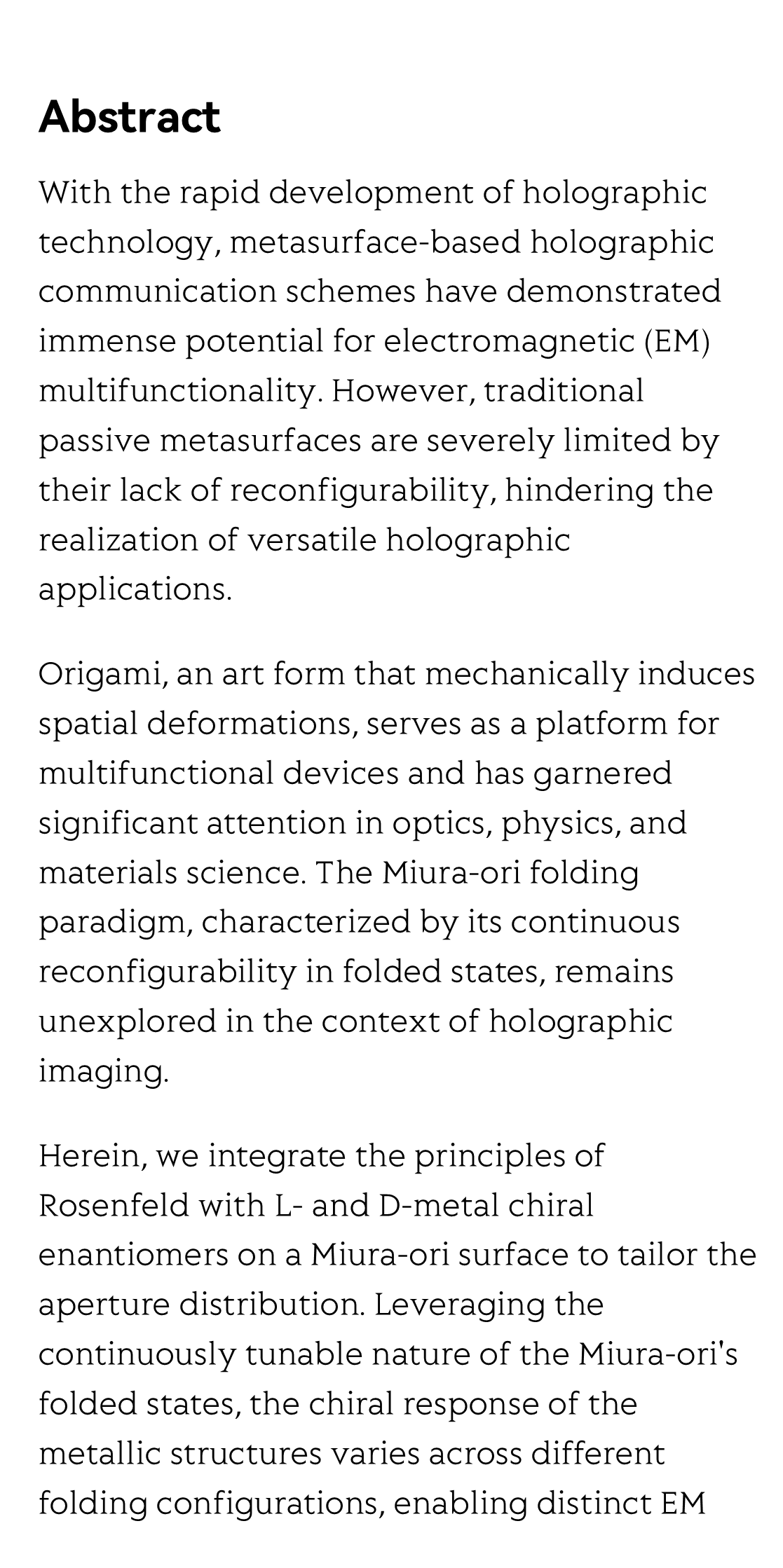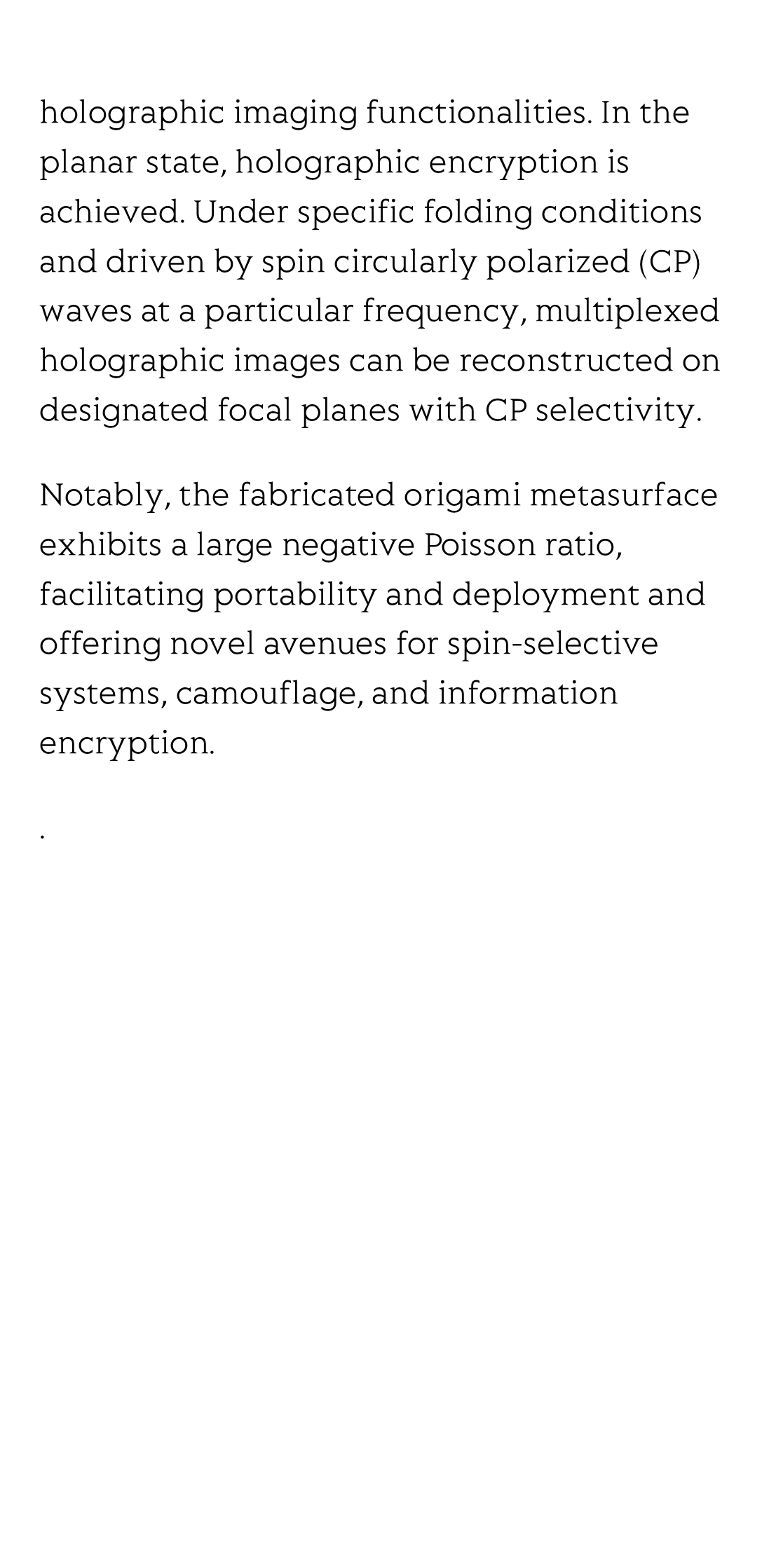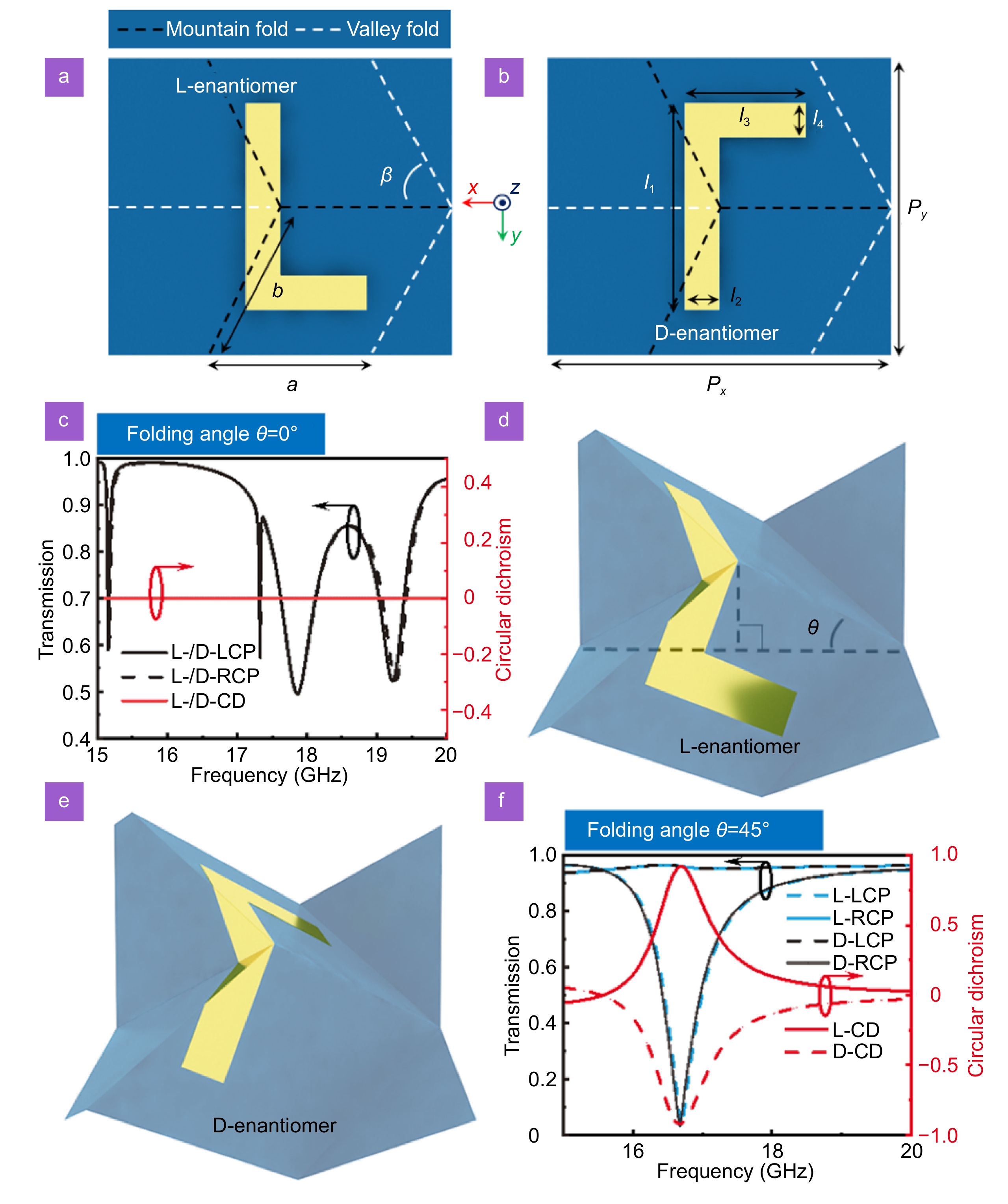(Peer-Reviewed) Reconfigurable origami chiral response for holographic imaging and information encryption
Zhibiao Zhu 朱志标, Yongfeng Li 李勇峰, Jiafu Wang 王甲富, Ze Qin 秦喆, Lixin Jiang 蒋李鑫, Yang Chen 成洋, Shaobo Qu 屈绍波
Shaanxi Key Laboratory of Artificially-Structured Functional Materials and Devices, Air Force Engineering University, Xi'an 710051, China
中国人民解放军空军工程大学 陕西省人工结构功能材料与器件重点实验室
Opto-Electronic Science, 2025-04-25
Abstract
With the rapid development of holographic technology, metasurface-based holographic communication schemes have demonstrated immense potential for electromagnetic (EM) multifunctionality. However, traditional passive metasurfaces are severely limited by their lack of reconfigurability, hindering the realization of versatile holographic applications.
Origami, an art form that mechanically induces spatial deformations, serves as a platform for multifunctional devices and has garnered significant attention in optics, physics, and materials science. The Miura-ori folding paradigm, characterized by its continuous reconfigurability in folded states, remains unexplored in the context of holographic imaging.
Herein, we integrate the principles of Rosenfeld with L- and D-metal chiral enantiomers on a Miura-ori surface to tailor the aperture distribution. Leveraging the continuously tunable nature of the Miura-ori's folded states, the chiral response of the metallic structures varies across different folding configurations, enabling distinct EM holographic imaging functionalities. In the planar state, holographic encryption is achieved. Under specific folding conditions and driven by spin circularly polarized (CP) waves at a particular frequency, multiplexed holographic images can be reconstructed on designated focal planes with CP selectivity.
Notably, the fabricated origami metasurface exhibits a large negative Poisson ratio, facilitating portability and deployment and offering novel avenues for spin-selective systems, camouflage, and information encryption.
Flicker minimization in power-saving displays enabled by measurement of difference in flexoelectric coefficients and displacement-current in positive dielectric anisotropy liquid crystals
Junho Jung, HaYoung Jung, GyuRi Choi, HanByeol Park, Sun-Mi Park, Ki-Sun Kwon, Heui-Seok Jin, Dong-Jin Lee, Hoon Jeong, JeongKi Park, Byeong Koo Kim, Seung Hee Lee, MinSu Kim
Opto-Electronic Advances
2025-09-25
Dual-frequency angular-multiplexed fringe projection profilometry with deep learning: breaking hardware limits for ultra-high-speed 3D imaging
Wenwu Chen, Yifan Liu, Shijie Feng, Wei Yin, Jiaming Qian, Yixuan Li, Hang Zhang, Maciej Trusiak, Malgorzata Kujawinska, Qian Chen, Chao Zuo
Opto-Electronic Advances
2025-09-25







